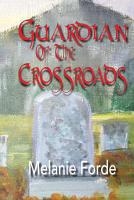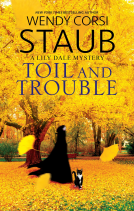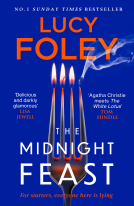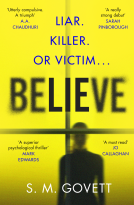
How to Read Gardens
A crash course in garden appreciation
by Lorraine Harrison
This title was previously available on NetGalley and is now archived.
Send NetGalley books directly to your Kindle or Kindle app
1
To read on a Kindle or Kindle app, please add kindle@netgalley.com as an approved email address to receive files in your Amazon account. Click here for step-by-step instructions.
2
Also find your Kindle email address within your Amazon account, and enter it here.
Pub Date 5 Mar 2018 | Archive Date 8 May 2018
Quarto Publishing Group - Ivy Press | Ivy Press
Talking about this book? Use #HowToReadGardens #NetGalley. More hashtag tips!
Description
Garden visiting has never been so popular but how many of us really understand what we are looking at when strolling through a beautiful garden? Are we looking at an original landscaped site or a re-creation? Is the planting matter authentic or made up of modern hybrids? Are the steps and terracing in the Italianate style or are they Arts and Crafts? The truth is that most gardens of any age are like a palimpsest: successive generations have changed and influenced the soft and hard fabric of the place over time. Inevitably many of the gardens we wander through today are an amalgam of changing fashions and circumstance. Garden landscapes can plot the rise and fall of a family’s fortunes, record man’s exploratory spirit through the introduction of foreign plant species, and chart the destruction (and regeneration) caused by natural disasters.
How to Read Gardens provides you with all the knowledge you needs to tease out the clues that will tell the complete story of a garden’s past. From the grandest estate to the smallest suburban plot, this book will enliven and inform every future garden visit.
Available Editions
| EDITION | Other Format |
| ISBN | 9781782406037 |
| PRICE | US$17.99 (USD) |
Featured Reviews
 Deborah W, Reviewer
Deborah W, Reviewer
"How to Read Gardens" is a short guide to garden appreciation. The review copy I received contained only 80 pages of the book and did not contain the sections on trees, flowers, plants, and garden styles. I can only comment on the sections about architectural features, garden buildings, and other features.
The text was brief and aimed at a person who is touring a garden to help them better understand what they are looking at and some reasons why a feature might have been used. Each section contained photos or illustrations showing what various features that you might find in a garden look like and the differences between them, like the difference between a pergola and an arbor. There were some mentions of when a certain feature was most popular or where it was popular (focusing on Europe and America). Overall, I'd recommend this book to people who enjoy touring gardens who want help identifying various garden features.
 Librarian 182823
Librarian 182823
We all love to visit gardens, and the more we know the more we can appreciate. Learning to identify when garden features were popular and how successive generations have modified and transformed a garden will inform and enhance every garden you visit in the future. This is the only title I know of on this subject, and a welcome addition for any garden addict or the public library.
 Reviewer 407401
Reviewer 407401
You can not help but have an urge to go strolling through a garden when you read this book. The author breaks down the components so well, with illustrations and photos from the architecture to the seating. Would be a wonderful companion to have while you are visiting not only infamous gardens but any formally structured garden. You will glean not only a respite while walking but an appreciation for the deliberate placement and purpose of the original design.
 Reviewer 446033
Reviewer 446033
As a reference book for schools or for garden lovers, this book makes us visit the gardens through the history by illustrating with pictures and diagrams and by explaining the architectural process of garden.
How to Read Gardens: A Crash Course in Garden Appreciation by Lorraine Harrison
2010 original publication
I received this excerpt copy of this digital book which contained about 40 pages from NetGalley and Herbert Press/Ivy Press in exchange for an unbiased review.
When most people stroll through a garden it’s doubtful that much thought is given to the magnificent view. Rather than provide a detailed explanation of the historical and influential effects of gardens through the years, this is a more user friendly guide.
The excerpt of the book I received started with an introduction to types and styles of gardens before skipping to the physical features and structures. The use of varied materials for walls, seating and decorative gates help to define the particular garden. It is difficult to review a book without the context of the complete book. The selection I received was interesting and made me want to put it in context with the beginning of the book.
Update: The publisher provided me with the completed version of this book. The book in its entirety is facinating and well illustrated. It is a must read for those who love garden structure and architecture involved in the magnificent displays we see.
 Ewa B, Reviewer
Ewa B, Reviewer
I have received an e-copy of this book from the publisher via NetGalley in exchange for an honest review. Thank you!
There are few things I love as much as growing plants. It's a whole process - first we have the seeds, then tiny sprouts, then little seedlings that need to be repotted into larger containers, and then suddenly there is a huge sunflower in my balcony. Yes, balcony - unfortunately I have no access to a garden of my own. Which means that when I want to spend time in a garden, I am at the mercy of other people's gardens as well as public gardens and parks. I am the kind of person that is actually super excited upon discovering that there is a public garden that I can visit during a city break.
How to Read Gardens is a perfect book for me: a thourough guide to orienting oneself in various types of gardens. Throughout the book, various issues connected with gardens are examined: layout and design, trees, plants and flowers that can be found in gardens, styles of gardens, various decorative elements (including, for example, types of gates or pavements). The gardens and all their features are thus dissected and neatly explained. However, in addition to its wealth of information, this is such an amazingly gorgeous book, illustrated with both colourful photos and various drawings that serve to explain all those garden-related concepts. I don't think the e-book quite gives justice to the pictures: I can imagine How to Read Gardens as a coffee-table book that I would love to show my friends and peruse at my leisure.
But most of all, I would just love to visit all the gardens mentioned in the book - this time, as a much more literate garden reader.
 Teresa N, Reviewer
Teresa N, Reviewer
I have a huge appreciation for gardens. I love gardening myself. I also love viewing other peoples gardens. Did you know that gardens are not just a bunch of plants tossed into an empty spot on the ground? They are a work of art as well. My husband and I visit a lot of museums and gardens. Some of the gardens at museums actually speak to you about the people who lived in the home. You can learn a lot of the person who planted the garden, their favorite colors, their favorite flower and more.
This book is a guide to help you understand more of what you are seeing when you visit Gardens. There are a huge variety of types of gardens. There are Flowers, there are trees, there are shrubs, and even some gardens are all about the pots and statues. This book helps you learn what you are looking at and how to appreciate the beauty even more. Most gardens that have withstood the twists and turns of time are not actually the original garden at all. They may have been remade over time and some may of even been restored back to what the planter assumes was the original garden. Knowing what to look for in a garden is also important in being able to appreciate it even more.
This book is an awesome guide. The text sections are short but give you enough to go on by adding the beautiful pictures in the book. There are also some black and white drawings as well. You may even see some ideas in this book for starting your own garden.
I received this book from the Author or Publisher via Netgalley.com to read and review.
 Charity H, Reviewer
Charity H, Reviewer
Maybe you never thought about reading a garden. But, this book makes it clear reading a garden is an art and makes visiting a garden even better as well as creating your own even sweeter. The photos are a delight to view as well. Gardens can really be a work of art and reading this book gives a chance to appreciate it even more. Whether you read the garden or not or get the complete story of a garden's past a garden is meant to be enjoyed -- so relax -- enjoy it your way!
 Randal W, Reviewer
Randal W, Reviewer
An easily understood primer on how to understand gardens. How they came to be, why they are designed the way they are, what they are supposed to represent. Now, when I visit famous gardens, I can have a deeper understanding of them.
 Bookseller 198421
Bookseller 198421
As a student of horticulture, I found this book to be invaluable in my studies. Will appeal to anyone looking to appreciate or design a garden.
 Gaby F, Educator
Gaby F, Educator
How to Read Gardens is an excellent field guide for lay people who appreciate spending time in public and private garden spaces and who want to know about the features that make them so inviting to their visitors. The book names and explains a multitude of elements and their different variations that can be found in formal and not-so-formal landscapes. Successful gardens and parks have in common that there is an organic flow between different spaces and a lot of features feel like they are meant to be right where they are. This book helps me appreciate that the water features, hedges, flower beds, buildings, etc. did not happen accidentally, but actually have been carefully placed into the landscape with specific intentions to to stimulate the senses and create a certain atmosphere for the visitors. Lorraine Harrison's descriptions and explanations are very detailed. For example, I know what a gazebo is. But I do not know the differences between a T'ing and a Kiosk. This book helps me close that gap.
 Educator 317339
Educator 317339
I like looking at gardens (both individually-owned and big ones in parks and historic houses), yet I never knew that there were so many features/names for things. This really is an architecture book, but on garden design and appreciation. Very informative, and it will take me a while to digest it all!

















